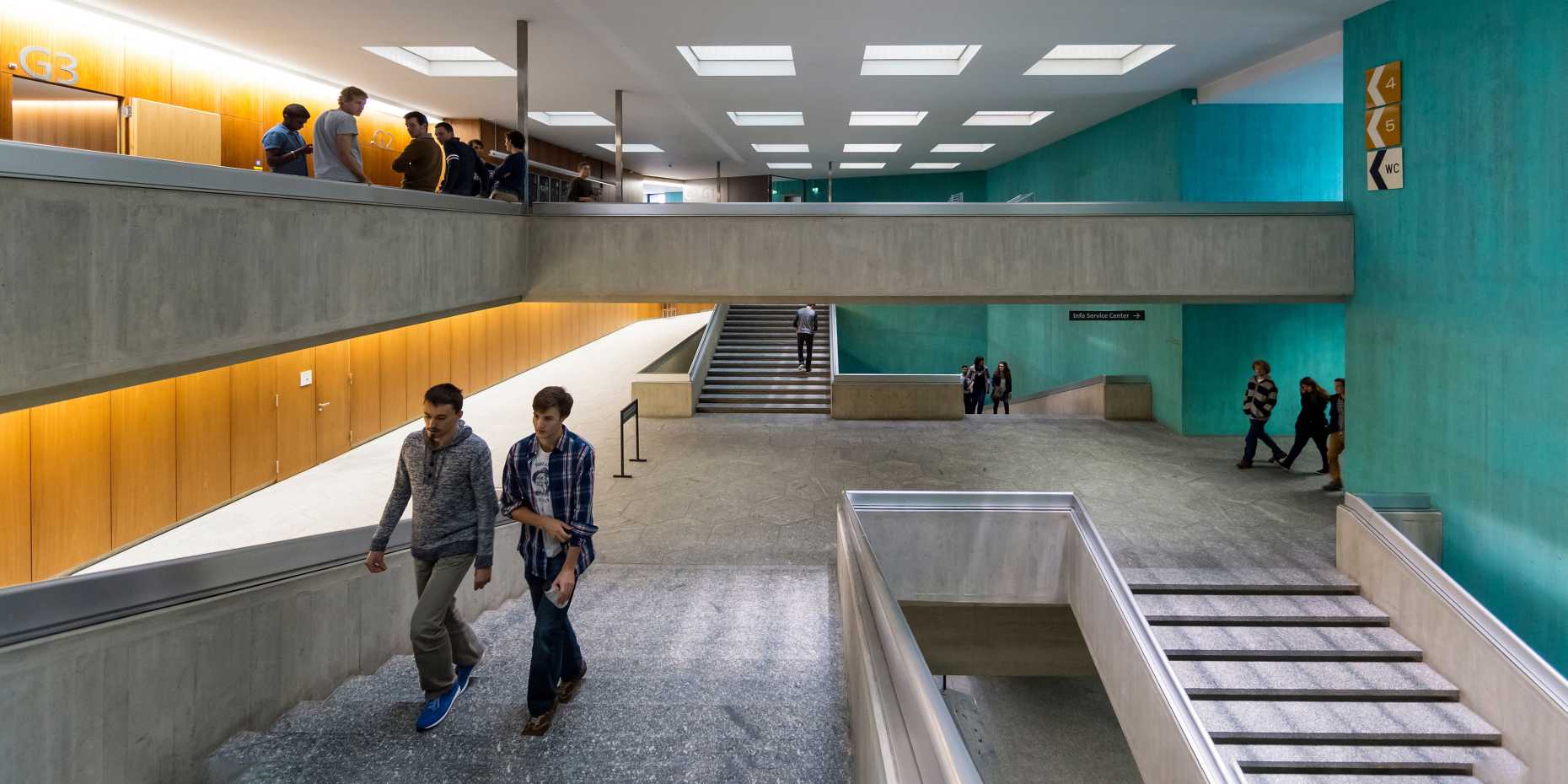Making ETH barrier-free
ETH is an open university. This also means that physical limitations should not prevent anyone from accessing ETH. The “Barrier-Free at ETH Zurich” project, which was launched in late 2018, aims to determine which infrastructural facilities still require adjustment to ensure barrier-free access for everyone.
A small step at the entrance, a toilet that is not wheelchair accessible, online information that is inaccessible to people with a visual impairment: hurdles that may seem minor to people without disabilities can prevent others with special needs from pursuing activities in line with their aims and talents. This can have severe consequences for their careers.
ETH’s buildings and other infrastructural facilities, such as its IT systems and the ETH Link bus, should all be available to all members and guests of ETH. The same goes for ETH’s core service: lectures. Horst Weltner coordinates the “Barrier-Free at ETH Zurich” project on behalf of the Executive Board and has been involved in various ETH projects as an interim manager. He says: “It should go without saying that lectures must be accessible to everyone, but it is a genuine challenge.” Ulrich Weidmann presides over the project’s steering committee.
A duty to break down barriers
Barrier-free accessibility is an important topic for the Vice President of HR and Resources. He says that ETH Zurich is aware of its considerable social responsibility in this field and many others: “Switzerland supports us, and our university belongs to everyone. This gives us a duty to support diversity and break down barriers to access.”
Why is this so difficult? Historical buildings were not designed with accessibility in mind. They can only be modified within the scope of very specific legal regulations, including heritage protection laws, says Weltner: “Our task is to engage in a productive dialogue with construction specialists and disability organisations to find smart solutions that meet the needs of everyone involved. We also rely on the support and experience of heritage protection experts in this process.” The federal act on the elimination of discrimination against people with disabilities (BehiG) requires the elimination of barriers to access, whether physical or IT-specific, wherever possible.
A focus on mobility, seeing and hearing
The newly-launched project aims to precisely determine and record all barriers to access that exist in every ETH building. Based on the results, the project team will develop potential solutions and an implementation schedule to propose to the Executive Board. The project focuses on two topics: mobility-related barriers, such as access to property and barriers within buildings, and visual and hearing impairments, which can render lecture attendance difficult or even impossible. The “Barrier-Free at ETH Zurich” project is set to conclude in 2020, and its results will show which barriers need to be removed and how.
“Design for all”
Weltner says that the ultimate goal of the project is to give people with disabilities full access to education and research. Whether a building is owned by ETH or “only” leased is irrelevant to this aim: “After all, this doesn’t make a difference to people who struggle to access a facility.” To achieve its goals, the project team has been working closely with people with disabilities and disability organisations, particularly the Behindertenkonferenz Kanton Zürich (BKZ), from the very start.
They were involved in starting the survey of ETH’s main building and the MM building at the end of January 2019. This complex, with a construction history dating back more than a century, poses some real challenges to the experts. New planning and construction projects, however, can be more consistently approached with a barrier-free mindset. “Good infrastructure needs to meet all possible requirements from the start. Barrier-free access should not require special solutions,” Ulrich Weidmann emphasises. Future construction and renovation projects at ETH will adhere to a simple maxim: “design for all.”
Your support
Would you like to help the project team? Do you have any concerns or questions?
Email the team at hindernisfrei@ethz.ch

Comments
No comments yet